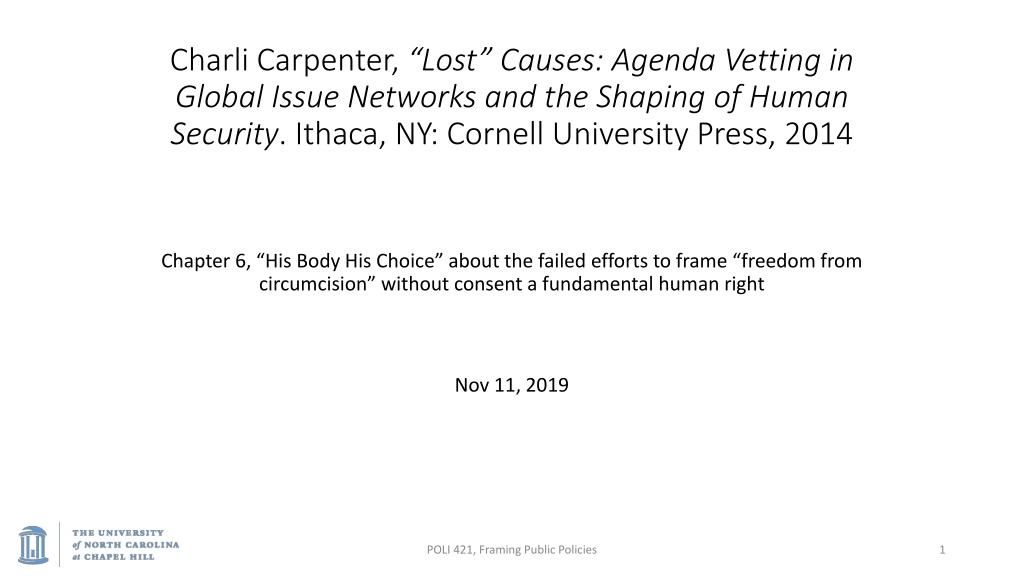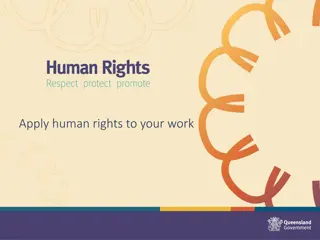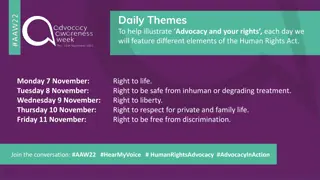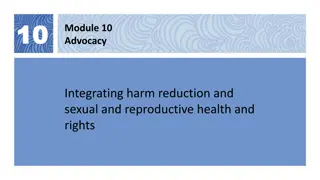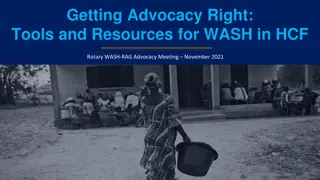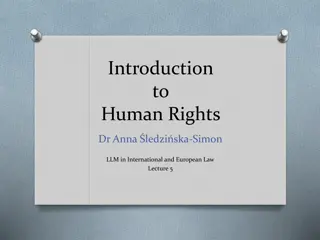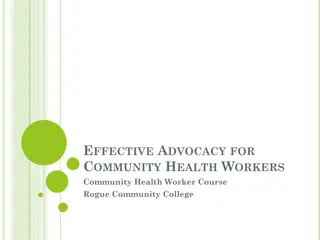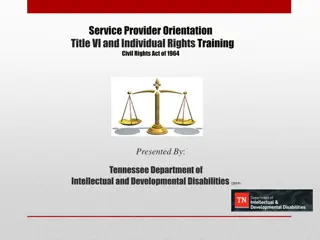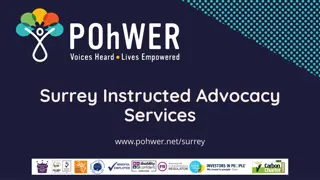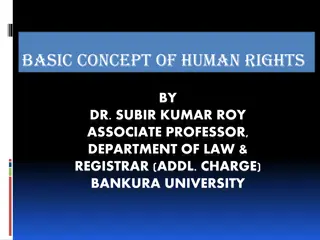Understanding Agenda-Setting and Human Rights Advocacy in Global Issue Networks
The content discusses agenda-vetting, agenda-denial, and the importance of setting priorities in global issue networks. It explores the challenges in framing freedom from circumcision without consent as a fundamental human right. Key points include agenda-setting theories, the role of gatekeepers in decision-making, and examples of issues not being addressed due to powerful influences. Overall, it sheds light on the complexities of advocating for human rights on a global scale.
Download Presentation

Please find below an Image/Link to download the presentation.
The content on the website is provided AS IS for your information and personal use only. It may not be sold, licensed, or shared on other websites without obtaining consent from the author. Download presentation by click this link. If you encounter any issues during the download, it is possible that the publisher has removed the file from their server.
E N D
Presentation Transcript
Charli Carpenter, Lost Causes: Agenda Vetting in Global Issue Networks and the Shaping of Human Security. Ithaca, NY: Cornell University Press, 2014 Chapter 6, His Body His Choice about the failed efforts to frame freedom from circumcision without consent a fundamental human right Nov 11, 2019 POLI 421, Framing Public Policies 1
Background on the book Interviews with international human rights activists and policymakers in the UN and other international organizations Focus on agenda-vetting by international gatekeepers Agenda-vetting: deciding what will and what will not be a priority issue. What does and does not get on the agenda of a government agency or political system. Gatekeepers: leaders of major organizations (Amnesty International, Human Rights Watch, etc.) and offices of the IO s concerned, who either get on board or suggest it s not a good time for this issue POLI 421, Framing Public Policies 2
Agenda-denial Roger Cobb and Charles Elder, 1972, Participation in American Politics, developed a theory of agenda-setting that also focused on the ability of powerful people to keep things off the agenda. Bachrach and Baratz, 1962, Two Faces of Power First face: say no or yes, make a decision among set choices Second face: determine what we can talk about, set what the choices are Second face of power particularly important, as it allows a process where only comparatively unimportant issues are debated and the really big things are off the agenda. POLI 421, Framing Public Policies 3
Big things are off the agenda This idea, from 1962, is very close to the idea of the Overton window that we talked about before. So, it matters what we talk about, what the options are, what the choices are. For example, abandoning capitalism is not something that anyone ever discusses. Lots of hypothetically possible things are not discussed. Some that used to not be discussed, like gay marriage, are now law, however. What would your rather have: Ability to pick among the choices someone else determines? Ability to set the choices, and let someone else pick among them? POLI 421, Framing Public Policies 4
A miserable failure to put freedom from unwanted circumcision on the agenda: Ch. 6. 30 percent worldwide rate of circumcision Cultural justification Not recommended by medical authorities (note: typically not condemned, either) US, CA, IS, NZ, AU, Middle East, Central and East Asia, some spread in Africa POLI 421, Framing Public Policies 5
Intactivism: Keep the body intact P. 122: A growing coalition of advocacy groups argue that nontherapeutic circumcision of nonconsenting minors is a violation of children s bodily integrity rights and an unwarranted infliction of pain on a vulnerable infant even when conducted with analgesic. P. 123: For several decades this intactivist movement has argued the practice should be treated as a human rights violation, prohibited by governments, and eradicated as a routine medical practice. POLI 421, Framing Public Policies 6
A miserable failure Some success in the international human rights world to condemn female genital mutilation (note the terms that are used, themselves very pejorative), no movement really at all on this issue. POLI 421, Framing Public Policies 7
A policy entrepreneur: Marilyn Milos A nurse, during training, observed a circumcision for the first time in the early 1980s: barbaric, she thought. Then, looking into it, she noted there was no medical value. So she became an activist. (Note how many policy changes have come from individual people like this. In this particular case, she has not succeeded in changing cultural norms. But not for a lack of trying. And maybe she or the movement she started will succeed in the future.) See her description of watching a circumcision, p. 124. POLI 421, Framing Public Policies 8
Mobilizing Create an organization: National Organization of Circumcision Information Resource Centers (NOCIRC), 1985 Get on the Phil Donahue show Have annual meetings Do some attention-getting things like record babies screaming Op-eds Statements of principles Lots of movement in the 1980s and 1990s, though probably fair to say this is like crossing the desert: very few policy successes POLI 421, Framing Public Policies 9
An angel investor Pp. 128-9, Texas billionaire Dean Pisani has a son and the doctors pressure him to carry out a circumcision. He looks into it and decides against but also then to support the movement; all this in the 2000s and 2010s. Figure 6: coding newspaper coverage of the topic: most medical professionals still in favor. Opposition comes from lawyers and activists. Medical, scientific, and religious people in favor POLI 421, Framing Public Policies 10
An international campaign (1990s-2010s) Targets: Major NGOs such as Amnesty International and Human Rights Watch, UN Office of the High Commissioner for Human Rights, major intellectuals in the international human rights world P. 129: During the 19990s and 2000s, attention to infant male circumcision among these organizations was virtually nonexistent and remained so for the duration of this study. (Not for a lack of trying ) POLI 421, Framing Public Policies 11
Theres no way Amnesty will ever pick this up Lots of efforts to develop this. All shut down firmly by the leadership, often with great hostility and anger Neither would anyone at the UN POLI 421, Framing Public Policies 12
Link to other issues? So they tried linking it first to issues of female circumcision: Those focused on that did not want to dilute the message Those focused on that did not have the mandate to worry / advocate for boys, only girls So they tried a scale shift : make a new issue, genital integrity, that would encompass both But from the female perspective, this still dilutes the message, so no buy-in. In the end, pretty much a failure POLI 421, Framing Public Policies 13
Why so hard? Religious / cultural values Gate-keepers of the international human rights community do not like to think that their own cultural values are human rights abuses! social proximity to alleged perpetrators (p. 139 ff.) Note that this was not the case with female genital mutilation; western countries don t do that so it was easier to generate consensus against it There are always more important other issues It might not be that the issue is a bad one, just that there are more important other ones. Agenda-scarcity. POLI 421, Framing Public Policies 14
Conflict with other issues Many in the international community think it should actually be expanded as a potential way to fight against HIV/AIDS Female mutilation activists have an important concern as well They did not want to take this on, but to stay focused on their own important issue. POLI 421, Framing Public Policies 15
Not enough to have a good frame Many reasons why this issue has never gone anywhere. Her main argument Gatekeepers decide things. Back to Bachrach and Baratz, 1961. Those who decide what we talk about play a more important role in determining outcomes than those who made final decisions. POLI 421, Framing Public Policies 16
